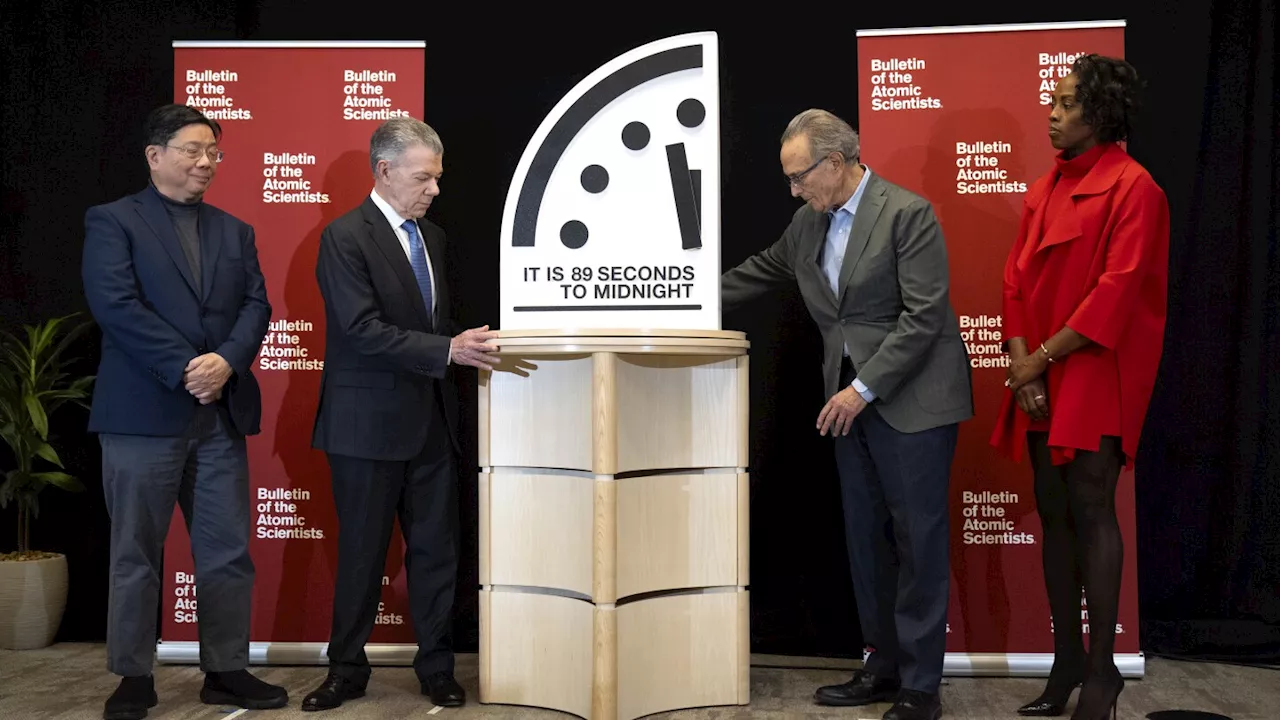A science-oriented advocacy group says the Earth is moving closer to destruction. The Bulletin of the Atomic Scientists said Tuesday that they've moved their “Doomsday Clock” to 89 seconds to midnight, the closest it has ever been, because of worsening threats ranging from nuclear war to climate change to pandemics and artificial intelligence.
A US shutdown on foreign aid is hitting from Africa to Asia to Ukraine. Here's howThe Afternoon WireTrump fills his government with billionaires after running on a working-class messageBig-time Love: Arizona's Caleb Love hits half-court heave at buzzer in OT win over No.
The Bulletin of the Atomic Scientists made the annual announcement — which rates how close humanity is from ending — citing threats that include climate change, proliferation of nuclear weapons, instability in the Middle East, the threat of pandemics and incorporation of artificial intelligence in military operations.
The clock had stood at 90 seconds to midnight for the past two years and “when you are at this precipice, the one thing you don’t want to do is take a step forward,” said Daniel Holz, chair of the group’s science and security board.The Doomsday Clock of the Bulletin of the Atomic Scientists, set at 89 seconds to midnight, is displayed during a news conference at the United States Institute of Peace, Tuesday, Jan. 28, 2025, in Washington.
The Doomsday Clock of the Bulletin of the Atomic Scientists, set at 89 seconds to midnight, is displayed during a news conference at the United States Institute of Peace, Tuesday, Jan. 28, 2025, in Washington. “A lot of the rhetoric is very disturbing,” Holz said. “There is this growing sense that ... some nation might end up using nuclear weapons, and that’s terrifying.”Nuclear bunker sales increase, despite expert warnings they aren’t going to provide protectionStarting in 1947, the advocacy group used a clock to symbolize the potential and even likelihood of people doing something to end humanity. After the end of the Cold War, it was as close as 17 minutes to midnight.
Vladimir Putin General News Russia Government World News Daniel Holz Associated Press Russia Science Climate And Environment Artificial Intelligence World News
United States Latest News, United States Headlines
Similar News:You can also read news stories similar to this one that we have collected from other news sources.
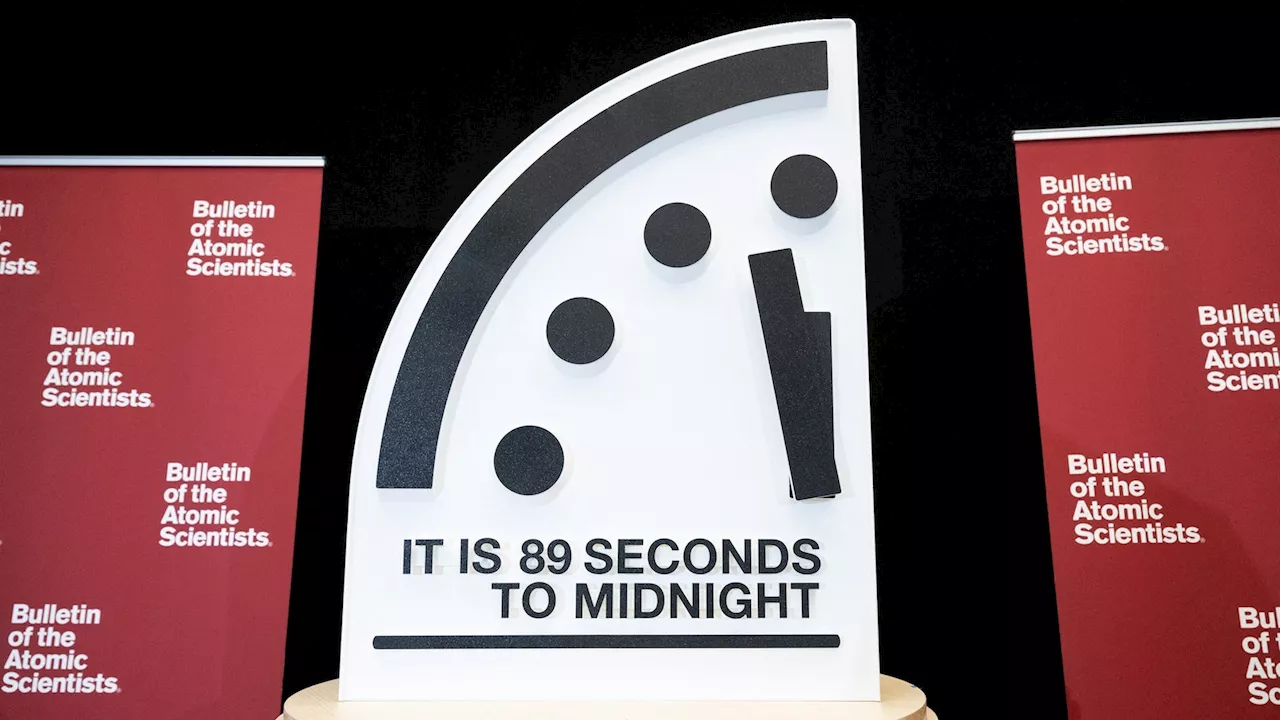 2025 'Doomsday Clock': This is how close we are to self-annihilation, scientists sayScientists said we haven't made enough progress addressing existential threats.
2025 'Doomsday Clock': This is how close we are to self-annihilation, scientists sayScientists said we haven't made enough progress addressing existential threats.
Read more »
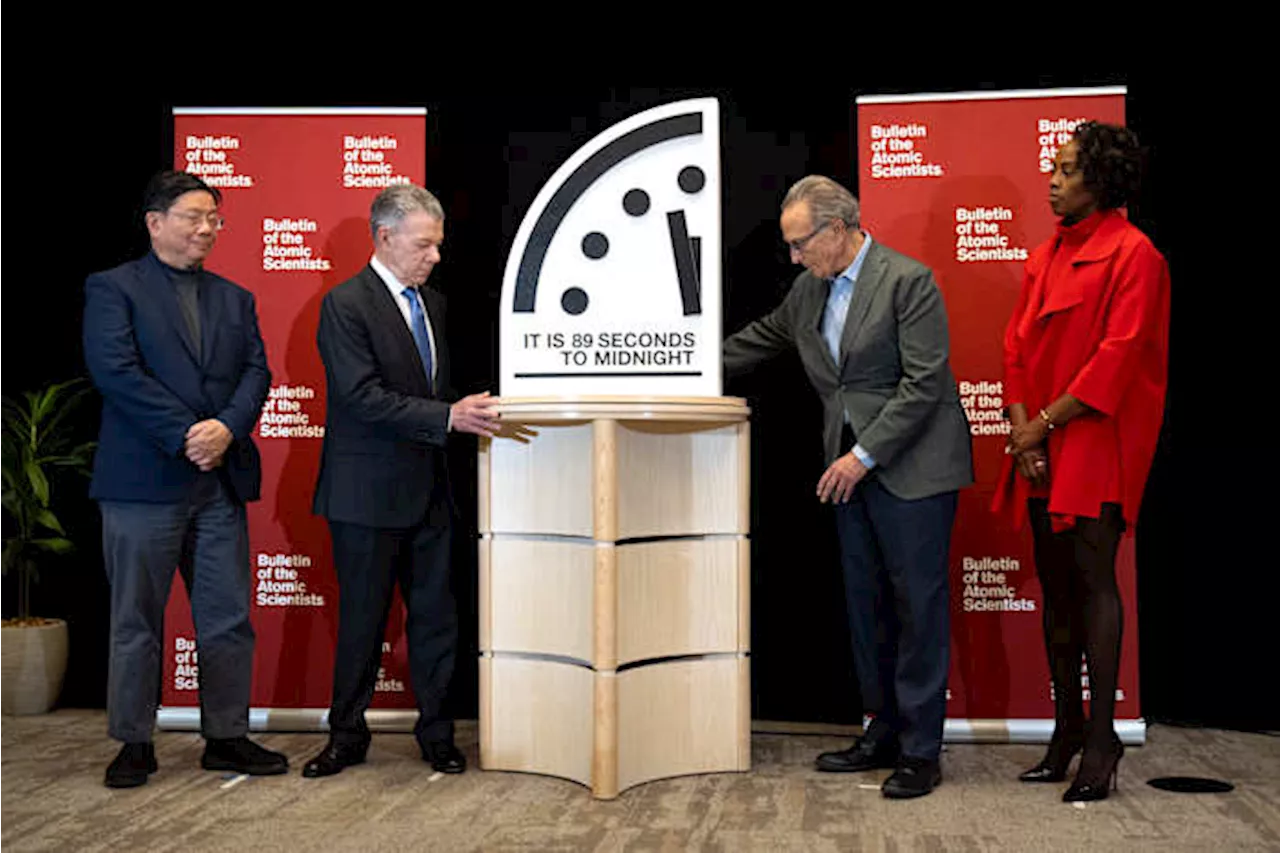 'Doomsday Clock' moves closer to midnight amid threats of climate change, nuclear war, pandemics, AIA science-oriented advocacy group says the Earth is moving closer to destruction.
'Doomsday Clock' moves closer to midnight amid threats of climate change, nuclear war, pandemics, AIA science-oriented advocacy group says the Earth is moving closer to destruction.
Read more »
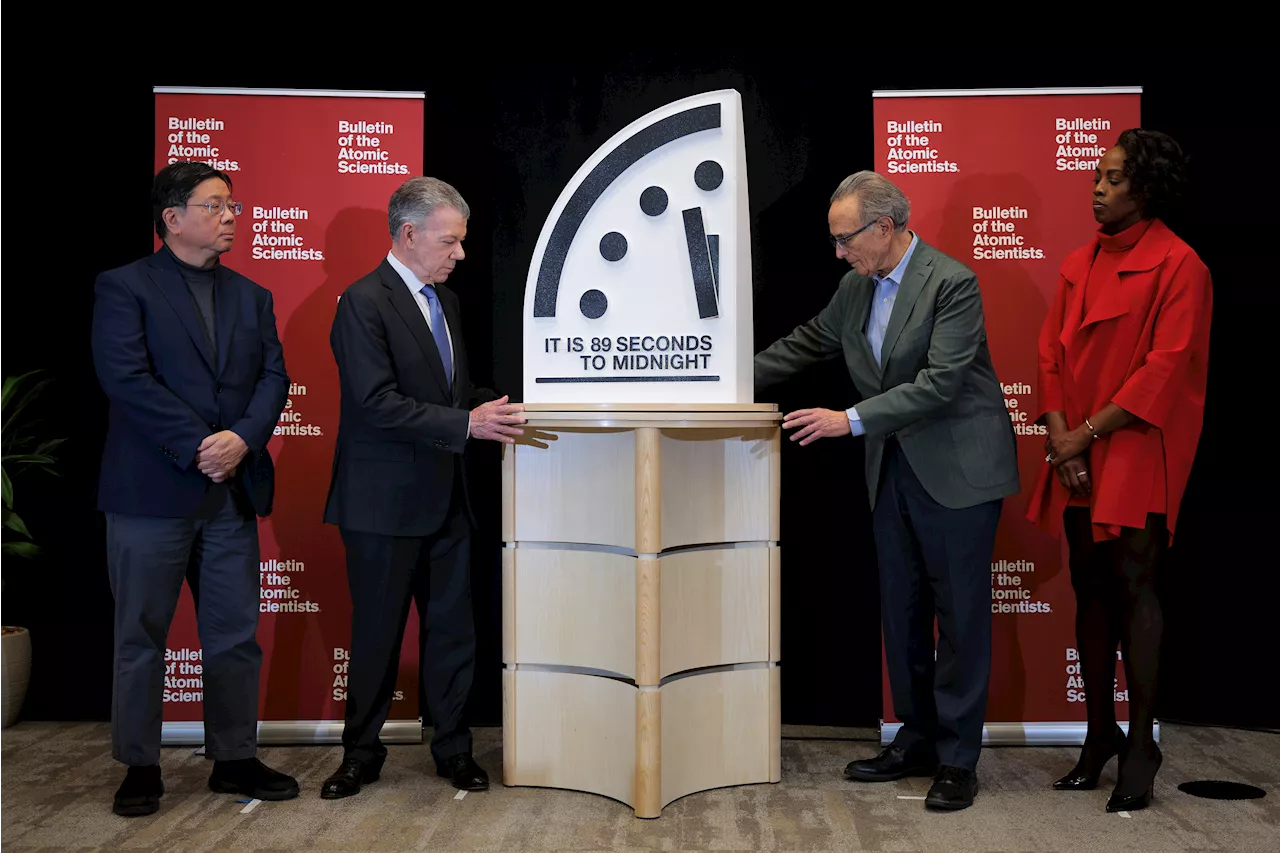 ‘Doomsday Clock' moves closer to midnight amid wide-ranging threatsThe Bulletin of the Atomic Scientists said Tuesday that they've moved their “Doomsday Clock” to 89 seconds to midnight, the closest it has ever been.
‘Doomsday Clock' moves closer to midnight amid wide-ranging threatsThe Bulletin of the Atomic Scientists said Tuesday that they've moved their “Doomsday Clock” to 89 seconds to midnight, the closest it has ever been.
Read more »
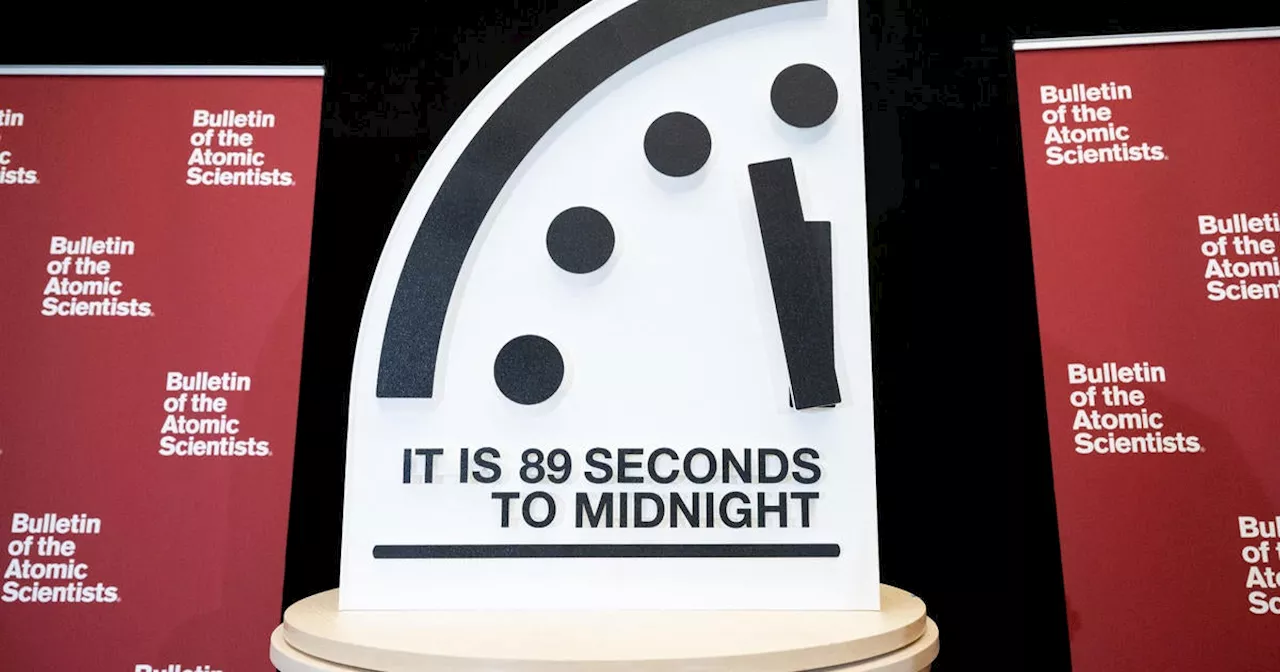 Doomsday Clock Set at 89 Seconds to Midnight, Closest Ever to Global CatastropheThe Doomsday Clock, a symbolic representation of humanity's proximity to global catastrophe, has been moved to 89 seconds to midnight, the closest it has ever been. This signifies a heightened sense of urgency regarding global threats such as nuclear weapons, climate change, biological threats, and disruptive technologies like artificial intelligence.
Doomsday Clock Set at 89 Seconds to Midnight, Closest Ever to Global CatastropheThe Doomsday Clock, a symbolic representation of humanity's proximity to global catastrophe, has been moved to 89 seconds to midnight, the closest it has ever been. This signifies a heightened sense of urgency regarding global threats such as nuclear weapons, climate change, biological threats, and disruptive technologies like artificial intelligence.
Read more »
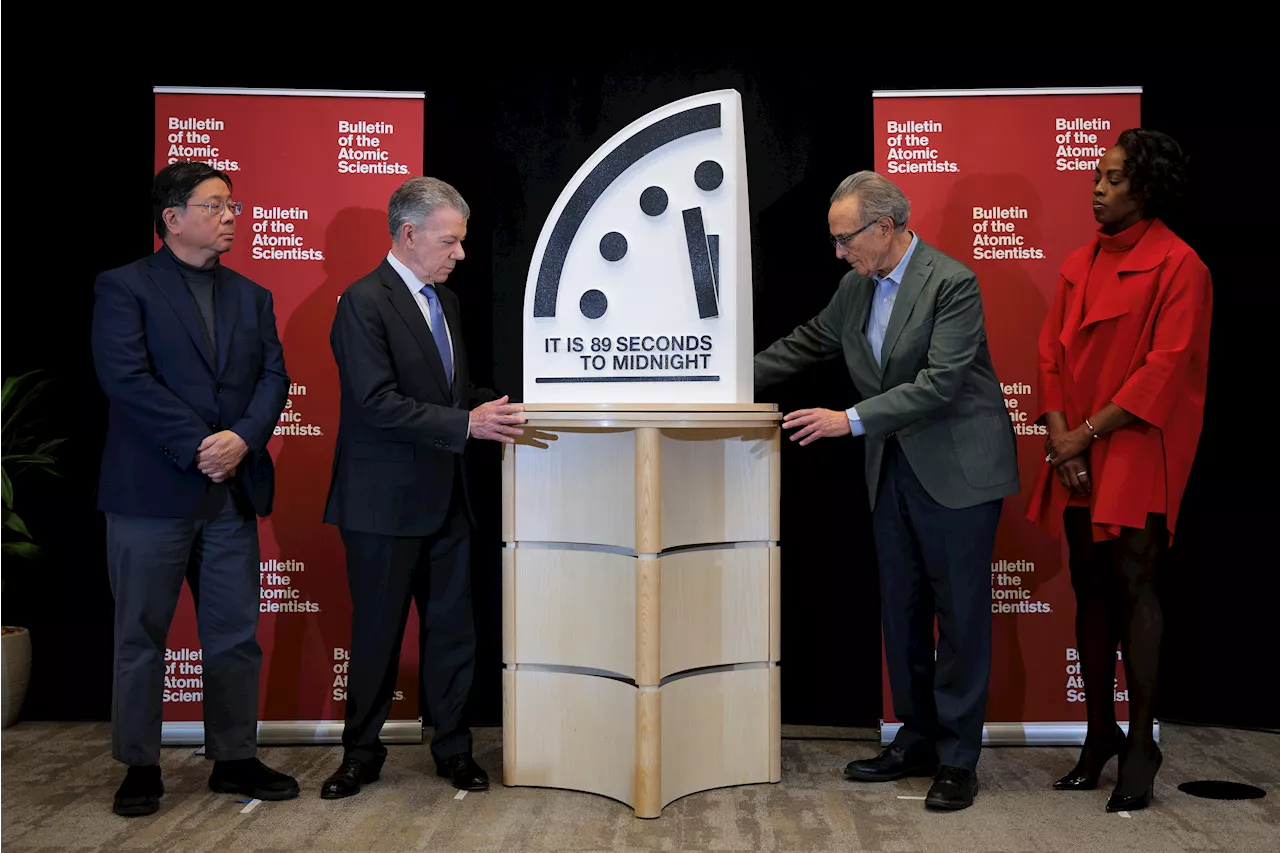 Doomsday Clock Moved to 90 Seconds to Midnight, Reflecting Heightened Global RisksThe Bulletin of the Atomic Scientists has moved the Doomsday Clock forward to 90 seconds to midnight, signaling an increased risk of global catastrophe. The decision was driven by escalating geopolitical tensions, the proliferation of nuclear weapons, and concerning rhetoric from world leaders.
Doomsday Clock Moved to 90 Seconds to Midnight, Reflecting Heightened Global RisksThe Bulletin of the Atomic Scientists has moved the Doomsday Clock forward to 90 seconds to midnight, signaling an increased risk of global catastrophe. The decision was driven by escalating geopolitical tensions, the proliferation of nuclear weapons, and concerning rhetoric from world leaders.
Read more »
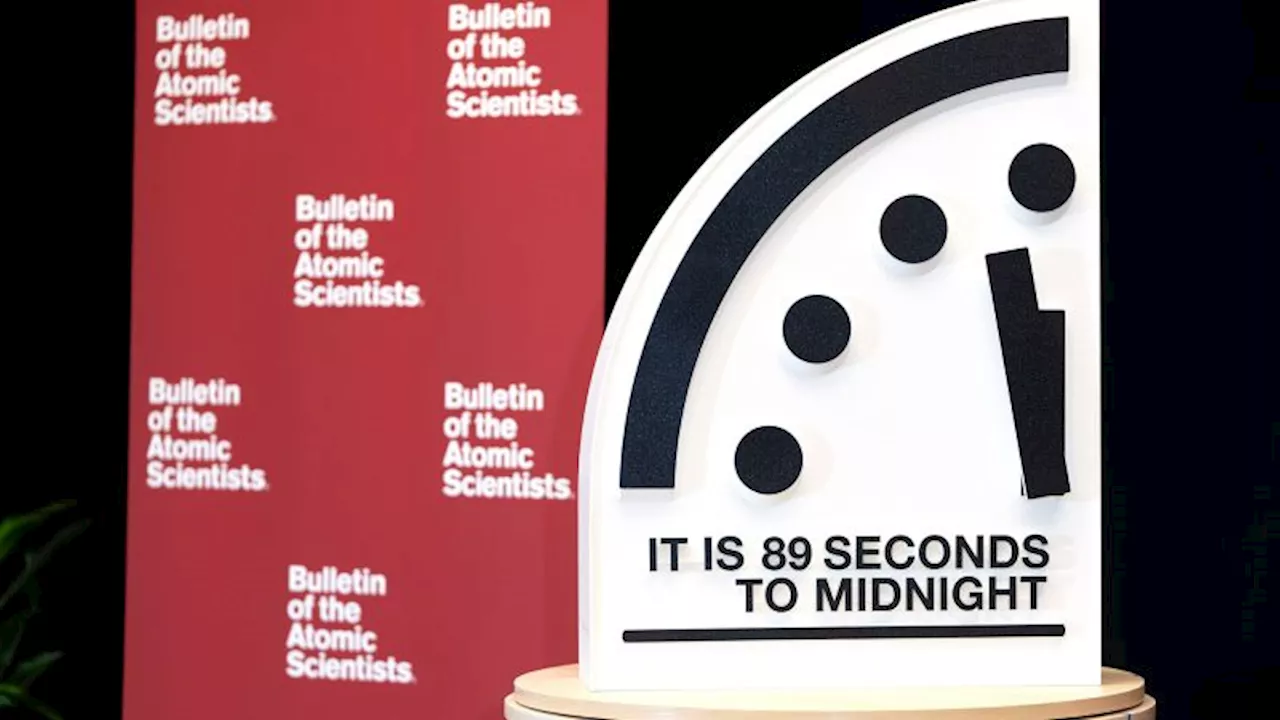 Doomsday Clock Set at 89 Seconds to Midnight, Closest Ever to Global CatastropheThe Doomsday Clock, a symbolic gauge of humanity's proximity to global catastrophe, has been set at 89 seconds to midnight, the closest it has ever been. The Bulletin of the Atomic Scientists, which established the clock in 1947, attributes the alarming shift to escalating nuclear threats, the ongoing war in Ukraine, climate change, and advancements in disruptive technologies. While the clock doesn't definitively measure existential risks, it aims to stimulate discussions about critical scientific issues and encourage global action.
Doomsday Clock Set at 89 Seconds to Midnight, Closest Ever to Global CatastropheThe Doomsday Clock, a symbolic gauge of humanity's proximity to global catastrophe, has been set at 89 seconds to midnight, the closest it has ever been. The Bulletin of the Atomic Scientists, which established the clock in 1947, attributes the alarming shift to escalating nuclear threats, the ongoing war in Ukraine, climate change, and advancements in disruptive technologies. While the clock doesn't definitively measure existential risks, it aims to stimulate discussions about critical scientific issues and encourage global action.
Read more »
